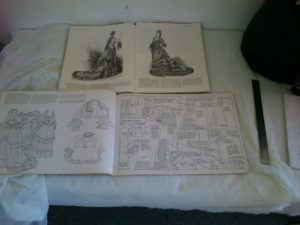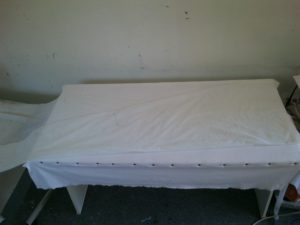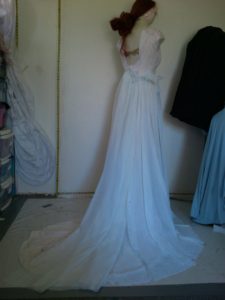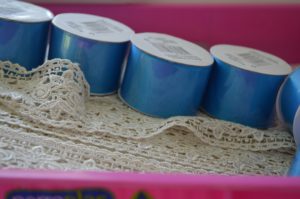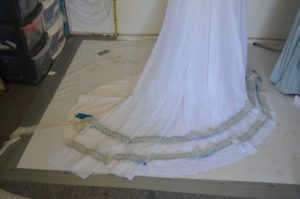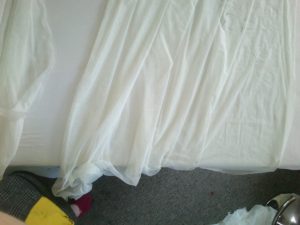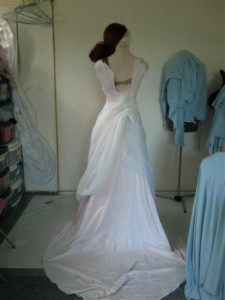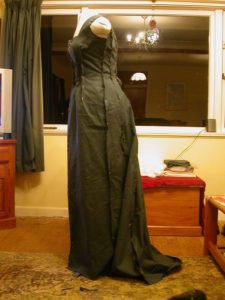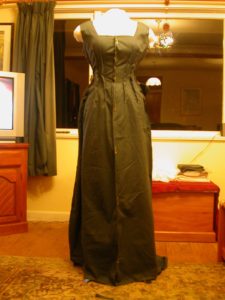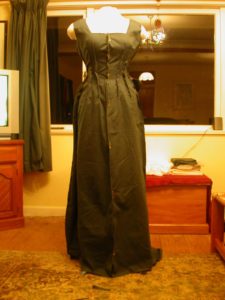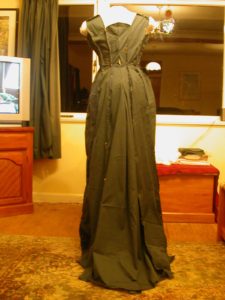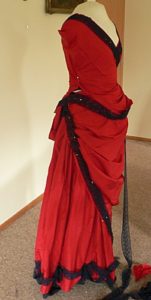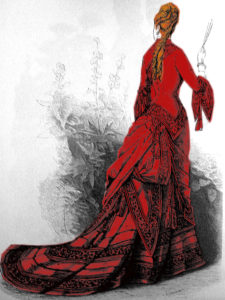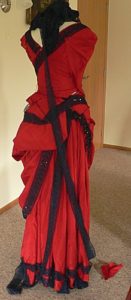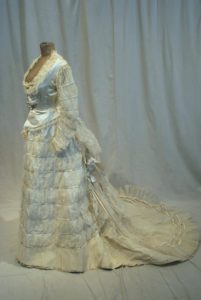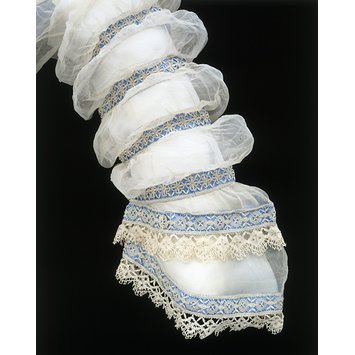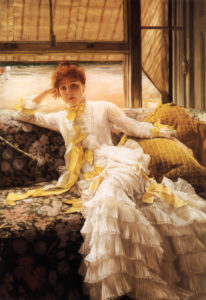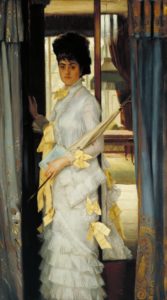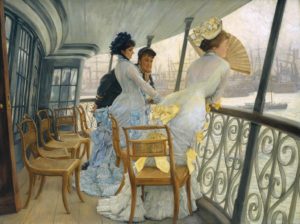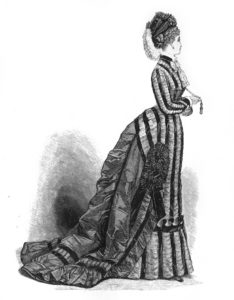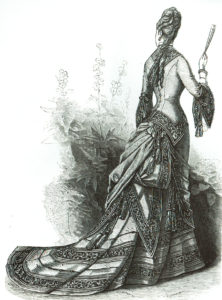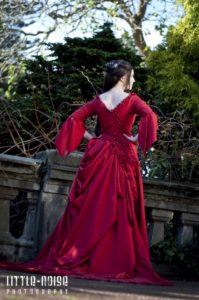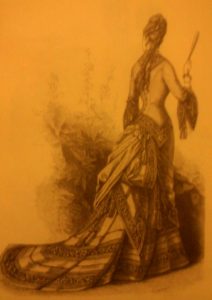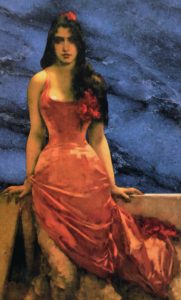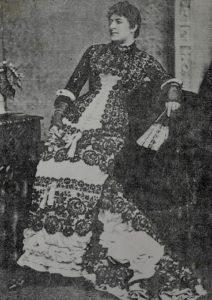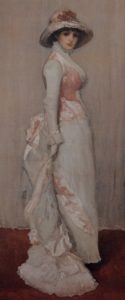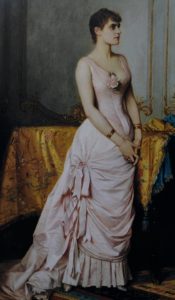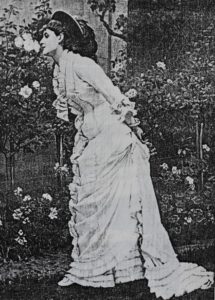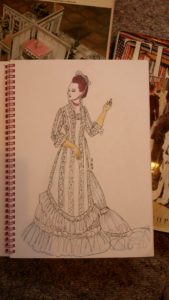The skirt and part of the drapery has been draped! I went back to my trusty Harper’s Bazar and Patterns of Fashion as a reminder. I know I have a few pages dedicated to cutting skirts of this era, but there are times it is handy to have an extant example and an idealised example to work from 🙂
But ultimately my 19thC skirts: Pattern diagrams || cutting guide for skirts pages summarise what was going on.
So that is a nice start, but I wound up wanting pleats on all those panels so di the top and tailing thing s per my pages above, and as per the guides at the start of Patterns of Fashion.
Seriously easy and fast.
So that was a nice start heading back to this era 🙂 Note the net is double layered so not as sheer as it will be.
I even managed to test the trim.
Then came the part that I just declared loving- weird drapery. So, fashion plates definitely do… idealise… things. Think of it as early shooping. In fact it’s so prevalent, like photoshopping, that the few plates that look realistic often look out of place. One of the plates I keep looking at is of aesthetic dress and it includes wrinkles, actual wrinkles!
Anyway. No photos of the marking out or net I cut without thinking, whoops- but it will be use to make the points of the drapery.
But I did have a brilliant idea of turning the fabric sideways and pleating a section before putting it on the stand, angled slightly to a dip about 1m from an end.
Yes, pink shoes yellow tunic.
So asymmetric draping that started as symmetric! Those pleats on the RHS were the sticking point. The plate does a very good job of making them look like they are perfectly vertical, even offsetting them a little as you’d expect from tension that the ties and front would apply, but of course this just does not work with what the text says which is to imply the LHS is the immediate result of the RHS meeting the front. So I use my basic principle of “good design lies”*
So the selvages are horizontal on the RHS and perpendicular to each other on the LHS. I have a few darts at the front too. This still needs tidying, but the darts and pleats will need to be tacked in place before taking off the stand to preserve their shape. (There is dress making advice out there of the time that basically says all modern dress was pretty much draped and that was the only way to get the look for a lot of them. Time to raid the virtual archives!)
I had to just treat both pointed extensions as separate pieces. In part because it’s summer and humid and I had already listened to the entirety of Les Miserables (Complete Symphonic) and was running out of patience.
But it will work. So the next step will be to sew the skirt panels together. A whole separate post about that! WP is not cooperating between my host and my desktop- I’m on copper and my files are not insanely large but they have to go one at a time and even then it’s iffy. So posting is more difficult than it has been in quite a while.
But I am trying to make the habit of posting properly once a day.
*AKA if there is a belt or a scarf there is a seam it is hiding. Or The Lord of the Rings Effect- Eowyn and Galadriel’s gowns were fitted this way. It’s a really good method for the 1920s gear I’m making too.

